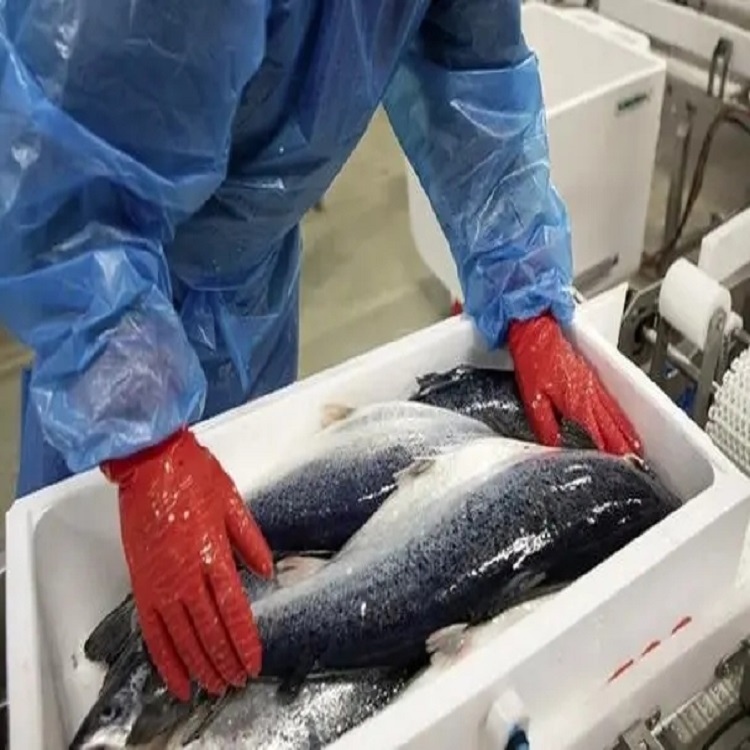Quaternary ammonium salts can be safely used for disinfection in aquaculture, but attention should be paid to the correct usage method and concentration to avoid harm to aquatic organisms.

1、 What is quaternary ammonium salt
Quaternary ammonium salt is an economical, practical, and widely used disinfectant with the chemical formula (CnH2n+1) (CH3) 3N+X -, where X - can be Cl -, Br -, I -, SO42-, etc. In aqueous solution, it appears as a gel or liquid and can quickly kill microorganisms such as bacteria, viruses, fungi, etc. It is not easily affected by organic matter and water hardness.
2、 The disinfection principle of quaternary ammonium salts
The disinfection principle of quaternary ammonium salts is to destroy the cell membrane and proteins of bacteria, causing them to lose their ability to grow and reproduce. The disinfection effect of quaternary ammonium salts is related to factors such as concentration, pH value, contact time, and temperature.
3、 How to use quaternary ammonium salts correctly
1. Concentration control
When quaternary ammonium salts are used for disinfection in aquaculture, the concentration needs to be controlled according to the size and hardness of the water body. In general, using a concentration of 0.1% -0.2% quaternary ammonium salt can effectively disinfect, but it cannot exceed 0.5%.
2. Contact time
When using quaternary ammonium salts for disinfection, it is necessary to ensure full contact with the water surface and water. It is generally recommended to disinfect for 30 minutes to 2 hours.
3. Frequency control
When using quaternary ammonium salts for disinfection, the frequency of disinfection also needs to be controlled. Excessive use can cause damage to the aquatic ecological environment, and should generally not exceed once a week.
4、 Precautions
1. Prevent excessive use
Excessive use of quaternary ammonium salts can increase the content of ammonia nitrogen and nitrogen in water bodies, affecting the ecological environment of water bodies and leading to problems such as the death of aquatic organisms.
2. Avoid mixing with other medications
Quaternary ammonium salts should not be mixed with other disinfectants, otherwise chemical reactions may occur, reducing disinfection effectiveness and potentially producing harmful substances.
3. Pay attention to personal safety
Quaternary ammonium salt is a less corrosive disinfectant, and gloves should be worn when using it, avoiding contact with the eyes and mouth. If ingested or accidentally enters the eyes, immediately clean and seek medical help.
5、 Security analysis
Although quaternary ammonium salts are widely used disinfectants, it is still necessary to pay attention to the correct usage method during use to avoid adverse effects on aquatic ecological environment and aquatic organisms.
Related studies have shown that under the correct use of concentration and disinfection frequency, quaternary ammonium salts have less toxicity to aquatic organisms and will not have a significant impact on them.
The principle of action of the quaternary ammonium salt of trimethylamine oxide (TMAO) is mainly reflected in its surfactant properties and chemical stability:
Surface activity: The quaternary ammonium salt structure gives it a dual property of hydrophilicity and hydrophobicity, which can reduce the surface tension of liquids. In detergents, this characteristic helps to remove oil stains: the hydrophilic end combines with water, and the hydrophobic end combines with oil, forming micelles to encapsulate dirt
Structural stability: The nitrogen oxygen bond (N → O) polarity of quaternary ammonium salts is strong, which can stabilize the three-dimensional structure of proteins. In osmotic pressure regulation, proteins are protected from denaturation factors such as urea and ammonia nitrogen through charge interactions
Weak oxidizing property: As a mild oxidant, the oxygen atoms in the quaternary ammonium salt structure can be transferred to other substances (such as aldehyde synthesis reactions) and self reduced to trimethylamine

In summary, quaternary ammonium salts can be safely used for disinfection in aquaculture, but attention should be paid to correct usage methods and concentrations to avoid harm to aquatic organisms.
Post time: Jul-23-2025





